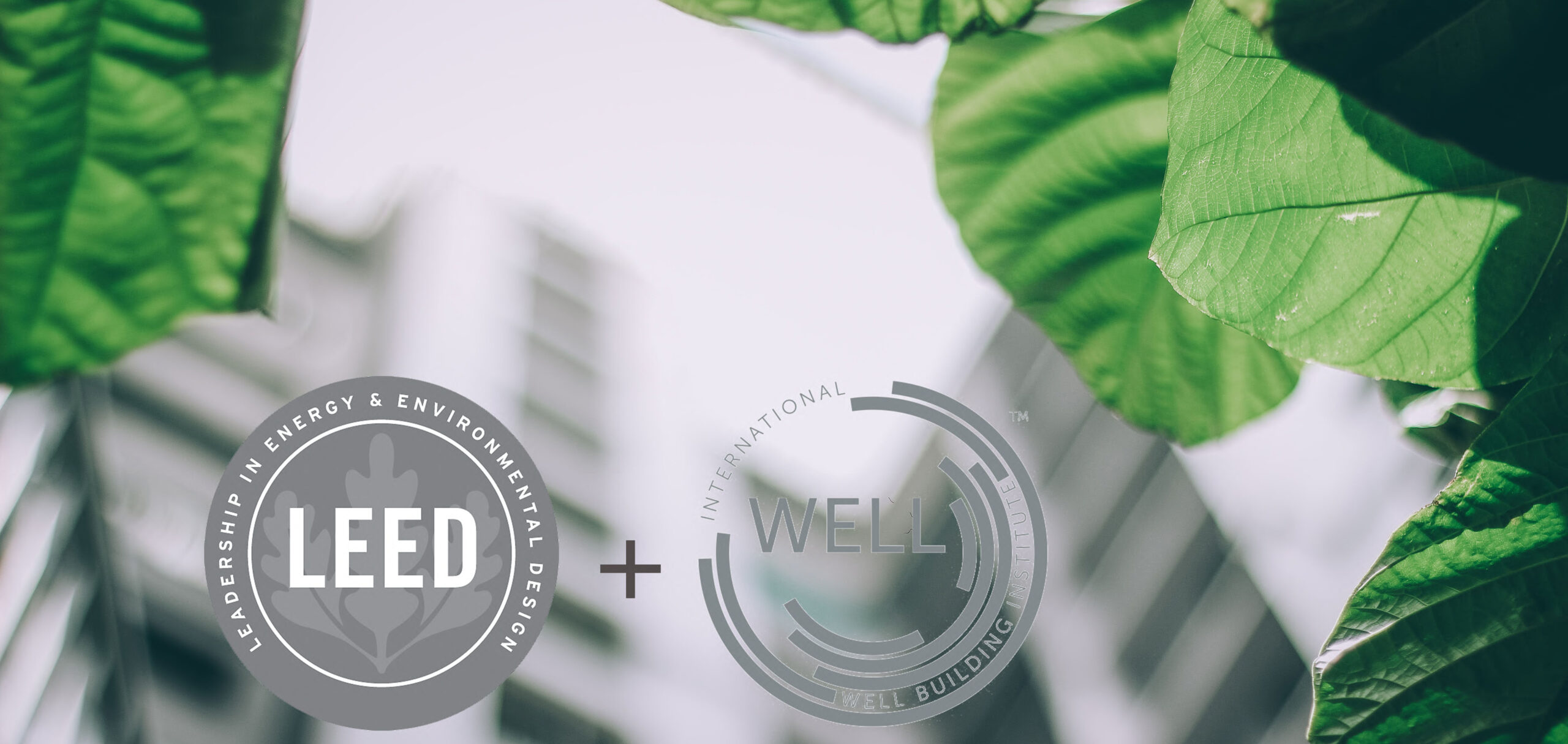Buildings have an irrefutable impact on the world we live in and the people who inhabit them. Thus, it has become increasingly vital to prioritize sustainable, healthy building practices that take into account both environmental and human well-being. The International WELL Building Institute (IWBI) and the U.S. Green Building Council (USGBC) have joined forces to address this need, introducing a new, comprehensive certification process for buildings that strive for both LEED and WELL certifications – LEED and WELL Streamlined Certification Process.
LEED and WELL are two certification programs that aim to promote sustainable building practices and human health and well-being. The Leadership in Energy and Environmental Design (LEED) program focuses on environmental sustainability, while the WELL Building Standard focuses on promoting human health and wellness in the built environment.
Both programs have seen an increase in market focus and commitment in recent years as people recognize the importance of building design and its impact on the environment and our health. The new LEED + WELL Streamlined Certification Process is a welcome development for organizations pursuing both certifications. It offers an integrated approach to health and sustainability, transforming how stakeholders unite to make key business decisions.
Streamlined Certification Process
The process identifies synergies between LEED and WELL and creates efficiencies for organizations pursuing both certifications. This streamlined process makes it easier for project teams to align their goals and implement strategies that prioritize both human health and environmental sustainability.
Both projects that are already registered under either or both platforms or those that are not yet registered for LEED or WELL can apply for the streamlined certification. The following versions of LEED are eligible for streamlined certification with WELL v2:
- LEED v4 BD+C,
- LEED v4 ID+C,
- LEED v4.1 BD+C, or
- LEED v4.1 ID+C.
To use this streamlined process, project teams first need to identify WELL features that map to specific LEED credits. This information is available in the LEED + WELL Crosswalk, which outlines the mapping of individual WELL features to specific LEED credits and vice versa. Project teams can use this crosswalk to understand where WELL and LEED are aligned and what strategies and initiatives will support both programs.
The LEED + WELL Submittal Form is a required document for both LEED and WELL reviews. It identifies the team’s selected compliance pathways for third-party reviewers, making it easier to verify that requirements for both programs have been met. The submittal form also clarifies where respective documents are stored, either in the LEED or WELL project.
Step 1. Plan
Identify WELL features that map to specific LEED credits using the joint crosswalk.
Step 2. Submit
Upload relevant documentation in either your LEED or WELL account. Documentation only needs to be uploaded in one location.
Step 3. Clarify
Complete the review submittal sheet to note where respective documents are stored (either LEED or WELL project).
Step 4. Verify
Reviewers will use the submittal form to verify that respective requirements for both programs have been met.
Step 5. Achieve
Projects will be notified when each review is returned and if additional action is required.
By using the LEED + WELL Streamlined Certification Process, organizations can apply an integrated approach to health and sustainability. This approach transforms how they unite stakeholders and make key business decisions. The streamlined process saves time and effort while still ensuring that both certifications are achieved.
The LEED + WELL Streamlined Certification Process is a positive development for organizations seeking to prioritize both human health and environmental sustainability in their buildings. By simplifying the certification process, project teams can align their goals and create more sustainable, healthy buildings that benefit both people and the planet.












